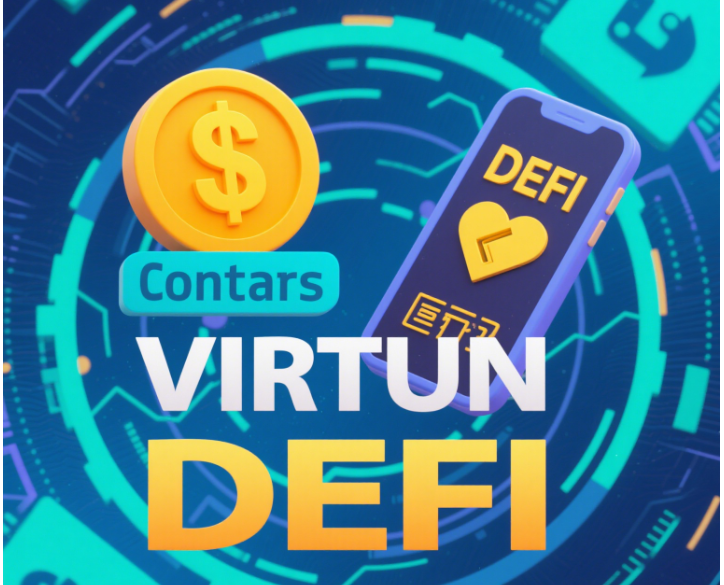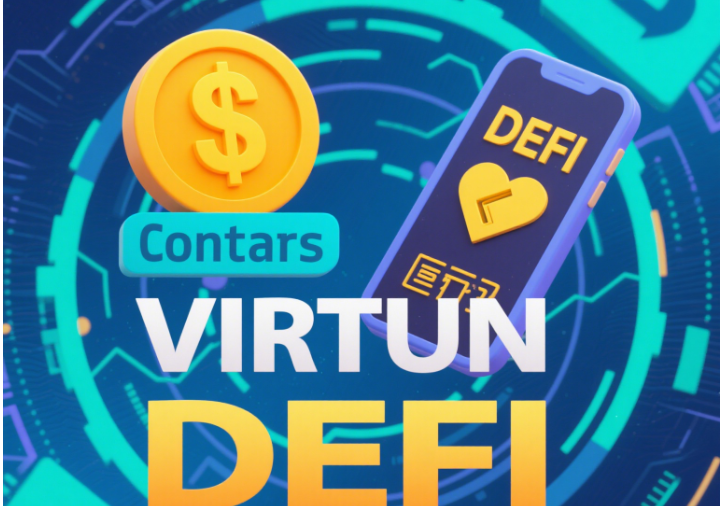In the rapidly evolving landscape of decentralized finance (DeFi), virtual DeFi lending has emerged as a transformative force, enabling users to leverage virtual assets—such as NFTs, gaming tokens, and digital collectibles—as collateral for loans. This innovative approach bridges the gap between the virtual and traditional financial worlds, offering liquidity solutions while preserving ownership of digital assets. In this article, we delve into the mechanics, advantages, and future of virtual DeFi lending, exploring its role in reshaping the global financial ecosystem.
What is Virtual DeFi Lending?
Virtual DeFi lending refers to decentralized protocols that allow users to borrow funds by staking virtual assets as collateral. Unlike traditional DeFi, which primarily uses cryptocurrencies like Bitcoin or Ethereum, virtual DeFi lending expands the scope to include non-fungible tokens (NFTs), in-game items, digital art, and even metaverse real estate. These assets are locked in smart contracts, and loans are disbursed based on their appraised value, often denominated in stablecoins or other cryptocurrencies.
Key components of virtual DeFi lending include:
- Smart Contracts: Automate loan terms, collateralization, and repayment.
- Oracles: Provide real-time valuation of virtual assets to determine loan-to-value (LTV) ratios.
- Decentralized Platforms: Connect borrowers and lenders without intermediaries, ensuring transparency and security.
For example, platforms like NFTfi allow users to borrow against NFTs, while Aavegotchi integrates virtual land from the Aavegotchi metaverse as collateral.
The Advantages of Virtual DeFi Lending
Virtual DeFi lending offers a host of benefits that distinguish it from traditional financial systems and even conventional DeFi:
1. Liquidity for Illiquid Assets
Virtual assets like rare NFTs or high-value gaming items are often illiquid, making it difficult to convert them into cash quickly. Virtual DeFi lending solves this by enabling users to access liquidity without selling their assets. For instance, a collector holding a rare Bored Ape Yacht Club NFT can borrow funds against it, preserving ownership while generating capital for other investments.
2. Diversification of Collateral
Traditional DeFi lending is dominated by cryptocurrencies, limiting accessibility. Virtual DeFi lending opens the door to a broader range of collateral, including:
- NFTs: Art, collectibles, and virtual real estate.
- In-Game Assets: Weapons, skins, and currencies from games like Axie Infinity.
- Metaverse Assets: Land plots and digital infrastructure in virtual worlds like Decentraland.
This diversification attracts new users to DeFi, including gamers, artists, and metaverse enthusiasts.
3. Global Accessibility
Virtual DeFi lending platforms operate 24/7 and are accessible to anyone with an internet connection. This democratizes finance, allowing users in regions with limited banking infrastructure to participate in global markets. For example, a developer in a developing country can borrow against their virtual land in The Sandbox to fund a project.
4. Automated Risk Management
Smart contracts enforce loan terms, reducing counterparty risk. If a borrower defaults, the collateral is automatically liquidated to repay the lender. Additionally, dynamic interest rates and LTV ratios adjust in real time based on market conditions, minimizing exposure to volatility.

Virtual DeFi Lending vs. Traditional DeFi: Key Differences
| Aspect | Virtual DeFi Lending | Traditional DeFi Lending |
|---|---|---|
| Collateral | NFTs, in-game assets, metaverse land | Cryptocurrencies (e.g., ETH, BTC) |
| User Base | Gamers, artists, metaverse participants | Crypto investors, traders |
| Liquidity | Illiquid virtual assets are made liquid | High liquidity in crypto markets |
| Risk Factors | Asset valuation volatility | Market volatility, smart contract risks |
| Innovation | Metaverse integration, NFT fractionalization | Yield farming, decentralized exchanges |
Real-World Applications and Case Studies
1. Gaming and Metaverse
Platforms like BendDAO allow users to borrow against NFTs from popular games like CryptoKitties. In the metaverse, Voxels enables landowners to stake their virtual property for loans, fostering economic activity within digital worlds.
2. Digital Art and Collectibles
Artists can leverage platforms like Arcade to borrow against their NFT artworks, funding new projects while retaining ownership. Collectors of rare digital items, such as CryptoPunks, can use Taker Protocol to secure loans for further acquisitions.
3. Decentralized Autonomous Organizations (DAOs)
DAOs can use virtual DeFi lending to manage treasury assets. For example, a DAO holding virtual real estate in Decentraland could borrow stablecoins to fund community initiatives without selling its land.
Challenges and Future Trends
While virtual DeFi lending holds immense potential, it faces significant challenges:
- Valuation Complexity: Determining the fair value of virtual assets is subjective and often relies on centralized oracles, introducing counterparty risk.
- Regulatory Uncertainty: Governments are still grappling with how to regulate virtual assets, creating compliance hurdles for platforms.
- Market Volatility: The value of NFTs and metaverse assets can fluctuate wildly, impacting loan stability.
Despite these challenges, the future of virtual DeFi lending looks promising:
- Cross-Chain Interoperability: Protocols like Chainlink CCIP are enabling seamless asset transfers across blockchains, enhancing liquidity and accessibility.
- AI-Driven Valuation: Machine learning models are being developed to provide more accurate and dynamic asset valuations, reducing reliance on centralized oracles.
- Institutional Adoption: As regulatory clarity improves, institutional investors are eyeing virtual DeFi lending as a way to diversify portfolios with digital assets.
How to Participate in Virtual DeFi Lending
- Choose a Platform: Research platforms like NFTfi, Aavegotchi, or BendDAO based on supported assets and security features.
- Secure a Wallet: Use a non-custodial wallet like MetaMask to store and manage your virtual assets.
- Deposit Collateral: Lock your virtual assets into the platform’s smart contract.
- Borrow Funds: Receive a loan denominated in stablecoins or other cryptocurrencies, with interest rates determined by market conditions.
- Repay or Liquidate: Repay the loan to reclaim your collateral, or face liquidation if you default.
Conclusion: The Future of Finance is Virtual
Virtual DeFi lending is not just a niche trend—it’s a paradigm shift in how we perceive and utilize digital assets. By unlocking liquidity in virtual worlds, it empowers creators, gamers, and investors to participate in decentralized finance like never before. As technology advances and regulations mature, virtual DeFi lending will play a pivotal role in bridging the gap between the physical and digital economies.
Stay ahead of the curve with Bitora, your trusted source for cutting-edge DeFi insights and market analysis. Explore the future of virtual finance today.









Leave A Reply